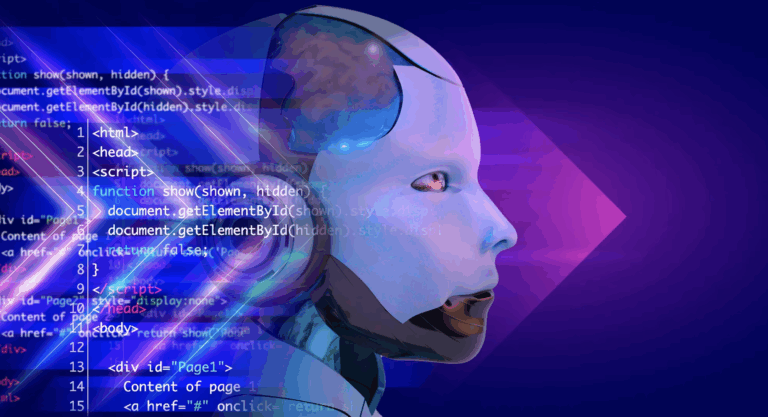For several years, I have been traveling, advising organizations and companies, or giving lectures on the topic: “Against formalism and the obsession with optimization in a digitalized organization.”
The obsession with optimization is consuming people. They are being replaced or are falling behind, with neither time nor energy for innovative ideas. Should an employee actually reflect on their tasks and perhaps come up with an idea—and even go so far as to share it with management—it is usually ignored.
The best chance we have is to create drastic imagery. Images that trigger us!
Today’s management is largely made up of people who focus solely on costs—taskmasters. Admittedly, these sweeping statements are somewhat one-sided and polemical, but they are also powerful, eloquent, and paint a vivid picture through exaggeration.
Short Summary
I argue that today’s management prioritizes optimization and efficiency over innovation. Major changes like digitalization or climate change are like relentless rain. And we’ve seen it raining for years now.
So what do most managers do in such a situation?
They shift work, seek further optimization and cost cuts to boost efficiency. Instead of looking around and flexibly building something new—perhaps even their own ships—most are building higher and higher walls around themselves. But what use are walls when the flood comes?
Especially in these times (pandemic and war in Europe—and yes, for me, Ukraine is part of Europe), the outdated organizational model is being pushed even more frantically.
„Optimization has turned into a neurotic formalism and efficiency mania. And this knows only one solution: even more efficiency. Even more of the same.“
This puts employees in a state of fear. Their work becomes more compressed. They become interchangeable, anonymous resources. The phrase “our employees are our greatest asset” only means they are seen as company property. Employees fear making mistakes. They worry about being outsourced or laid off. The quality of work suffers. In this climate, no one dares try anything new. No one builds ships.
The goal of management is to make employees work as much as possible. Two types of managers dominate: the introverted controller type and the extroverted pacesetter. Controllers are reliable and frugal. They value planning and error avoidance. They often work in finance or procurement. Pacesetters are drivers. They demonstrate and demand full commitment, are persistent and demanding. Often, they are department heads or in sales. Both manager types put immense pressure on employees. There is little room for creative work. Innovative ideas are nipped in the bud. Employees are chronically overworked and demoralized.
The obsession with optimization turns people into replaceable resources and blocks innovation. Human intelligence is hardly used anymore. People are reduced to numbers. They are more expensive and less efficient than machines.
Artificial intelligence can undoubtedly support humans. A specialized app often knows more and can access information more quickly and precisely than a person. Every piece of information can be automated and thus be helpful.
Further rigid process orientation turns people into slaves. Managers focus only on correctness and speed, leaving hardly any room for creativity. They become hardened and see their employees only as X-people, as Douglas McGregor described them in 1960. According to his theory, X-people need authority and control or they won’t work. Y-people, on the other hand, are intrinsically motivated, want to achieve and advance things.
If an employee has an innovative idea, the controllers will block it because it’s too expensive. The pacesetters will reject it because it’s too risky and time-consuming. Instead, they might prefer to simply buy a company that already does it. In the past, companies strived to have all competencies in-house. Today, everything that doesn’t yield direct profit is outsourced—even IT, which is now a core competence, especially in digital transformation.
The goal of optimization is not just to do more with fewer people. It also standardizes work so that it can be done by standardized people. Employees need only be as well-trained as the job requires. Based on Toyota’s lean production concept, we could call them „Lean Humans.“ Toyota aimed to avoid waste, but modern managers reduce lean management to speed and cost savings. Highly qualified individuals are considered unnecessary and potentially expensive. What’s in demand are employees with mainstream competencies.
Success is measured in hard numbers.
Y-people measure because they want to improve. X-people measure to know their rank. Since most executive teams are led by X-managers, companies often revolve around rank battles. Employees must outperform their peers, departments must outdo others, and companies must grow faster than their competitors.
This silo mentality must be broken. That is the only way for organizations and companies to flexibly adapt to rapidly changing challenges and markets. It’s about agile task management that includes people while utilizing digital transformation—something we are all in, and without the right support, stuck in.
“There are more and more regulations leading to toxic bureaucracy. Constant new reporting obligations emerge—only to be circumvented again.” Lawmakers know about the tricks companies play and pass regulation after regulation. Companies implement (or bypass) them. The result: rules are ineffective, bureaucracy grows.
Markets only regulate themselves if everyone has the same information.
In 2001, the Nobel Prize was awarded for research on market mechanisms under uncertain product quality. Three economists studied how markets behave under asymmetric information—when buyers and sellers have different levels of knowledge.
Buyers of used cars, for instance, hope for good quality; sellers know the real condition. When a large used car fraud is exposed, buyers withdraw. Honest dealers operating with tight margins are driven out. The dishonest ones stay and push the boundaries just enough not to get caught. This clearly shows that the market does not regulate itself as previously assumed. Symmetric information would be required—but that is rarely the case.
Despite all this, employees remain remarkably loyal. While management believes employees only care about money, they are really looking for psychological safety, direction, and above all, appreciation.
Companies must return to their roots to become agile and innovative.
Organizations are suffering from a systemic neurosis. Quarterly thinking overrides common sense. A short-term tunnel vision crowds out sustainable or new ideas. These companies need systemic therapy to become open and innovative again. They should reflect on their beginnings and find the courage to explore new ideas freely. They must resist the compulsion to evaluate everything solely for efficiency. It helps to follow the four fundamental principles of agile development:
- Individuals and interactions over processes and tools
- Working solutions over comprehensive documentation
- Customer collaboration over contract negotiation
- Responding to change over following a plan
I simply call this situational action. This comes from my own early days. Back then, when I had little more than an idea, I had to talk to many people about it. A few guiding principles emerged that still apply today—albeit in a new context.
Concretely, companies can take various actions.
They can bring in external consultants who offer more than repackaged dogmas. They can encourage ideas and bring in more external experts for innovative projects. They can relieve management of daily operations and let them work directly in projects. It also pays to actively support those involved. Sponsoring innovation projects or supporting initiatives outside of projects are great ways to make organizations more diverse and adaptable. Most importantly, create a Y-culture where project members are trusted with real responsibility. Open your company to the outside world. A fresh perspective brings enormous value.
Today, we can discover new markets and opportunities with minimal effort. Both already exist within your company—they just need to be awakened. You don’t need a feel-good manager for that (though it won’t hurt). You just need someone who listens. All members and partners of WERCONS are trained and certified auditors. And what do auditors typically do? That’s right: they listen carefully.
Companies need more curious, experimental employees.
Our society has adopted an X-culture. Students and employees know a lot—but they can do very little. This is the fault of our education system. It fosters crystallized intelligence—factual knowledge. But what really matters (not just in my opinion) is fluid intelligence: applying knowledge and solving problems.
In Japanese martial arts, there’s the concept of Shu-Ha-Ri.
- Shu (Obey) means learning the basics and rules.
- Ha (Break) stands for applying and experimenting.
- Ri (Leave) represents finding your own path.
Today, employees spend their entire careers in the Shu stage—fulfilling processes. But companies need more Ha-level employees: those who try, experiment, and explore.
Informed employees feel a stronger connection to the company. A renewed sense of “we” emerges.





